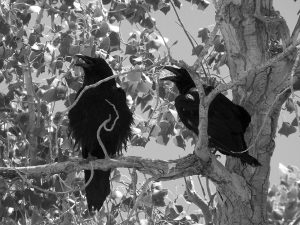You can now pre-order my next book Divining With Animal Guides: Answers From the World at Hand through Amazon US or Amazon UK. Pre-ordering the book generates interest and helps the publisher with promotional decisions, so if you want to read this book, please consider pre-ordering. You don’t have to pay until the book is shipped. Publication date is February 23rd.
Here is another excerpt:

Though our interactions with crows and ravens have changed as we have changed, the symbiotic relationship between us is ancient. Since they know so darn much about what is going on, it would be surprising if they had not been designated creatures of prophecy. Are they truly omniscient? Do they really know that you will have unexpected guests for dinner, and that the light on your answering machine is blinking? This seems like a bit of a stretch, even for me. The thing of it is, in divination it does not matter what the raven knows; what matters is what we know when we encounter the raven.
When Alexander of Macedon saw ravens quarreling at the gates of Babylon, the emperor knew this was an evil sign, though he continued into the city. A few weeks later he was on his deathbed. Ravens portended calamity to this man in this place at this time in his life. The association of ravens with death and ill fortune is the most widespread and pervasive in Western cultures. In folklore of southern Spain, for example, one croak of the raven means misfortune and three croaks means death.
But is disaster necessarily the message of the raven? When Alexander was lost in the deserts west of Egypt, after torrential rains wiped out the road, two ravens appeared, and the emperor understood they had appeared to guide his party. Soon the conquerors had found the oasis at Siwa. Ravens portended salvation to this same man in this other place at this other time in his life. Whether Classical historians were embellishing or accurately reporting is not important here: the contradictory interpretations show a nuanced view of raven symbolism, dependent on circumstantial variables.
